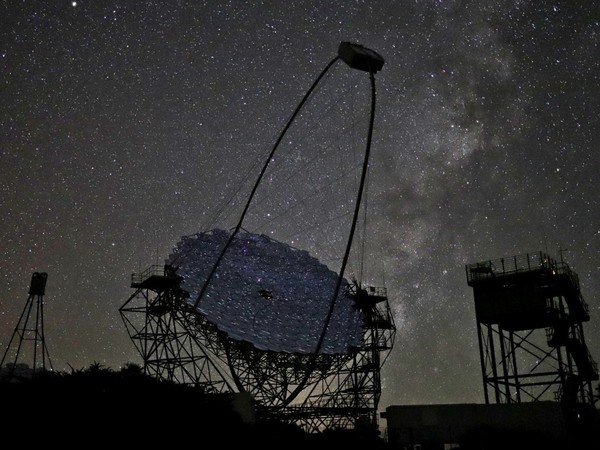Experts from the Joint Laboratory of Optics, a joint workplace of Palacký University and the Institute of Physics of the Czech Academy of Sciences, the Astronomical Institute of the Czech Academy of Sciences, and Charles University are significantly involved in the upcoming construction of a system of more than 60 telescopes in Spain and Chile. Czech scientists and technicians ensured the production of high-precision mirrors and various moving parts of the telescopes. The international collaboration will create the world’s most powerful observatory for gamma-ray astronomy, which will help scientists tackle complex astrophysics questions.
For example, scientists will use the system of telescopes to obtain more information about black holes, search for dark matter, deviations from Einstein’s theory of relativity, and try to understand the origin and role of cosmic particles.
The construction of the system of sixty telescopes was made possible on 7 January by the European Commission, which decided to convert the Cherenkov Telescope Array Observatory (CTAO) into a European Research Infrastructure Consortium (ERIC). The Joint Laboratory of Optics – a workplace of Palacký University and the Institute of Physics of the Czech Academy of Sciences – played a key role in the construction of the CTA Observatory, one of the most important projects for observation of high-energy gamma rays.
“The main contributions of the Czech partners in this project lie in the development of technology, professional expertise and the production of key components. Czech scientists and engineers have been involved in the design and construction of components of large-sized telescopes (LST), which cover the lower energy spectrum of gamma rays. Our contribution included the development of systems focused on optics, mechanics, and control of the telescopes, and the Czech Republic has had and will have a significant share – especially in the optical components,” said Miroslav Pech from the Joint Laboratory of Optics.
Czech experts also participated in the development and testing of small-sized telescopes (SST-1M) designed to observe gamma-ray astrophysics at very high energies. The Czech team focused on optical calibration and innovations in the design and assembly of these telescopes. The Czech Republic contributed by manufacturing precision optical elements, such as mirrors and other optical systems that meet the highest requirements for surface quality and reflectivity.
Scientists in Czech laboratories also focused on the development of thin optical layers, preparation of mirror surfaces, characterization methodology and measurement mechanisms of optical elements. In addition, they have provided expert capacities for testing and certification of components in the fields of optics, mechanics, and electronics. They have also made important contributions in the field of atmospheric monitoring, which is crucial for the correct interpretation of gamma-ray measurements, and in the selection of candidate sites for the construction of the observatory.
“Thanks to the involvement of Czech institutions such as Palacký University, the Czech Republic has established itself as an important partner in the international CTA consortium. The production of mirrors, mechanical components and other key technologies developed in the Czech Republic meet the strict requirements for stability and precision in extreme conditions. The Czech contribution to the development of optical systems and technologies for the SST-1M and LST telescopes was essential for the implementation of the CTA project on the global level,” noted Pech.
The Cherenkov Telescope Array Observatory is intended to be the largest and most powerful gamma-ray astronomy observatory in the world, with an energy range of (20 GeV – 300 TeV). To cover the wide energy range, CTAO will use three types of telescopes: large-sized telescopes (LST), medium-sized telescopes (MST), and small-sized telescopes (SST). The CTAO headquarters is hosted by the Istituto Nazionale di Astrofisica (INAF) in Bologna, Italy. The Scientific Data Management Center (SDMC) is operated by the Deutsches Elektronen-Synchrotron DESY in Zeuthen, Germany. The construction and operation of the observatory is the responsibility of the CTAO central organisation, which is collaborating with partners from around the world to establish the observatory.
